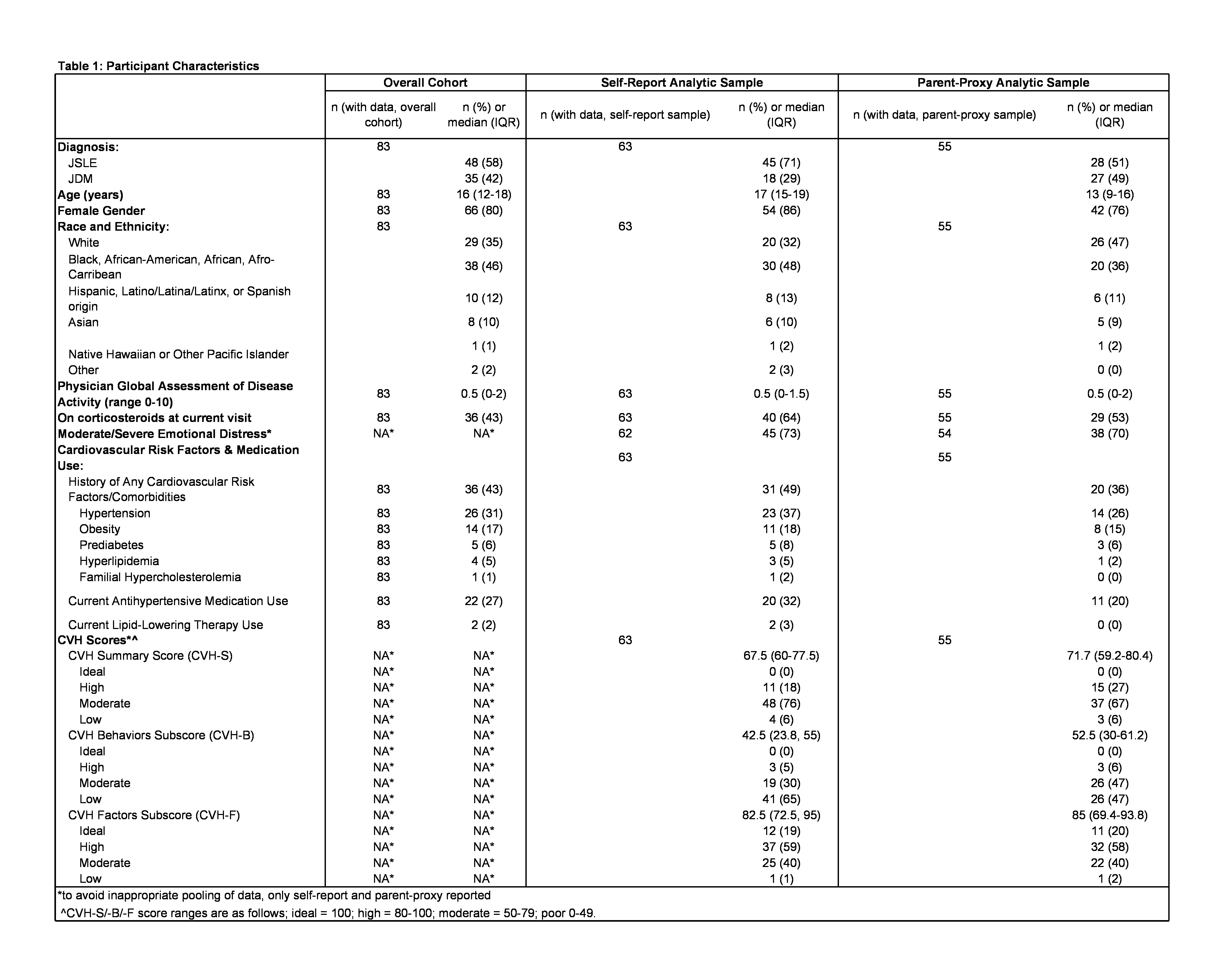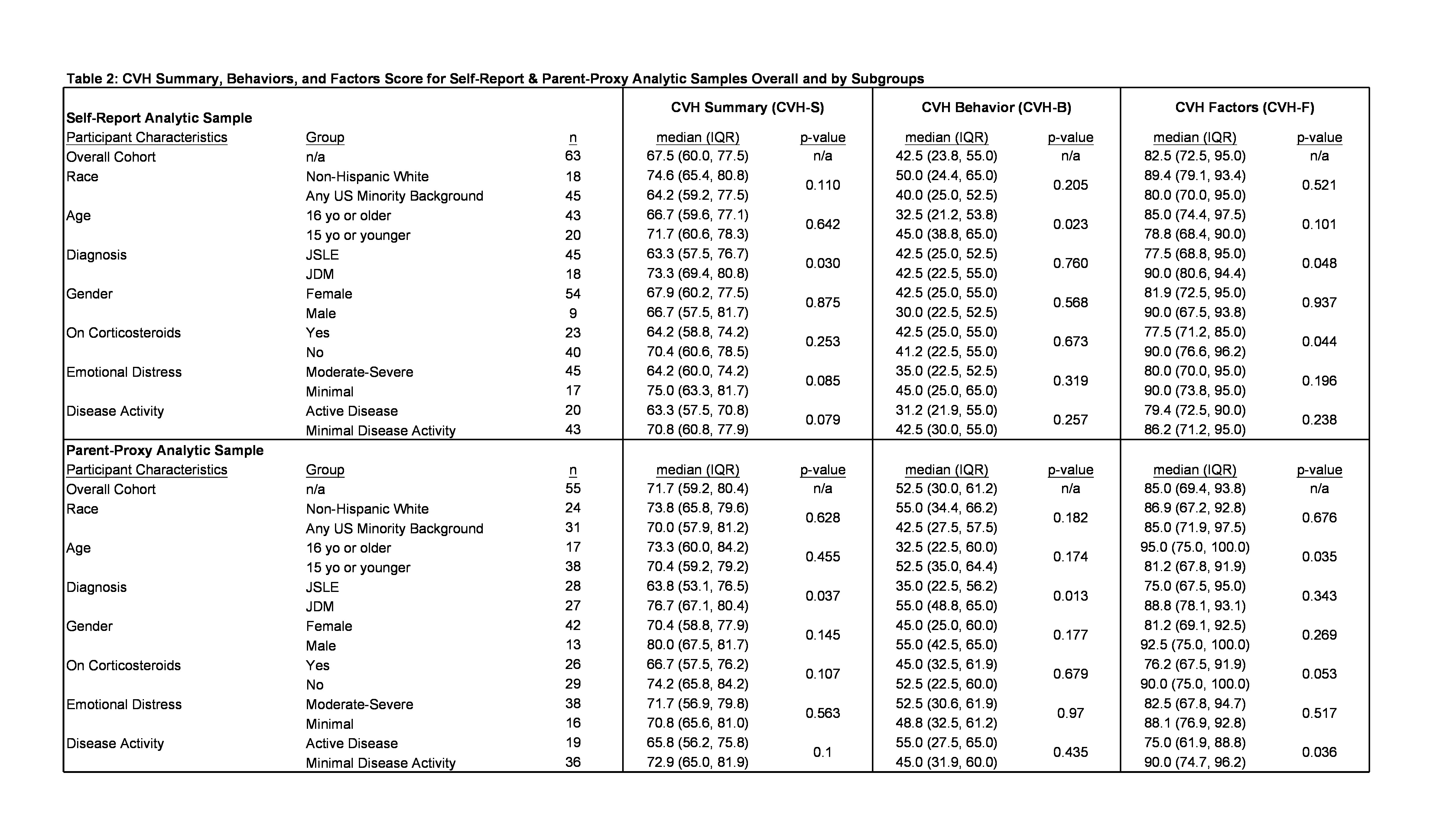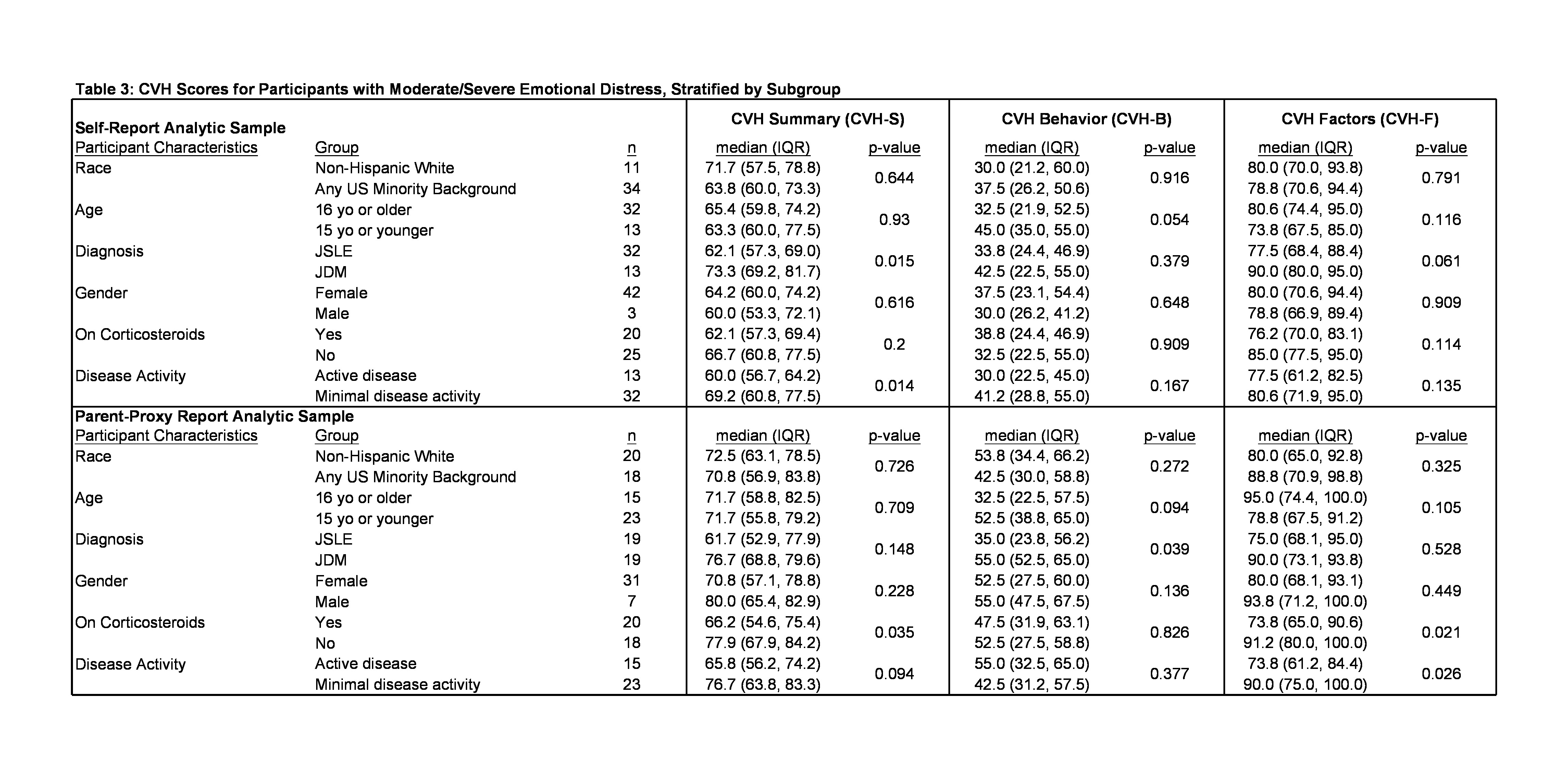Session Information
Session Type: Abstract Session
Session Time: 3:00PM-4:30PM
Background/Purpose: Juvenile lupus (JSLE) and dermatomyositis (JDM) are associated with premature cardiovascular disease (CVD). The American Heart Association (AHA) cardiovascular health (CVH) score is the sum of protective factors against CVD. Childhood CVH scores in the general population predict CVD in middle age, but CVH scoring has not been applied to JSLE or JDM patients. We present baseline data from the Lupus Erythematosus and Dermatomyositis Stress and Cardiovascular Health (LEADS-CV) study on the status of CVH in JSLE and JDM patients, including those with moderate-severe emotional distress.
Methods: We enrolled 83 patients (5-22yo) at Duke and UNC Children’s Hospitals, collecting self-reported (ages 12yo+; n = 63) and parent-proxy (ages 5yo+; n = 55) data, which were analyzed separately. We assessed CVH Behaviors (diet quality screener; PROMIS Pediatric Physical Activity) and CVH Factors (body mass index, blood pressure, non-HDL cholesterol, HbA1c) and derived CVH Summary (CVH-S, all 6 indicators), CVH Behaviors (CVH-B), and CVH Factors (CVH-F) scores (range 0-100, 100 = ideal, 80-100 = high, 50-79 = moderate, 0-49 = low) per AHA guidelines. All CVH scores were analyzed by subgroup (i.e. race/ethnicity, age, gender, diagnosis, steroid use, disease activity, moderate-severe emotional distress) per published T-score cutoffs for PROMIS® Pediatric Psychological Stress Experiences, Depressive Symptoms, and Anxiety measures. To assess interactions with emotional distress, we compared CVH scores for each subgroup in JSLE and JDM patients with moderate-severe emotional distress. Descriptive statistics were calculated, and exploratory Wilcoxon rank sum tests were performed to assess differences in CVH score distributions by subgroup.
Results: Table 1 shows participant characteristics. No participants had ideal CVH-S or CVH-B scores and only ~20% of participants had ideal CVH-F scores (Table 1). Most participants had moderate CVH-S and low CVH-B scores, while >40% had moderate or poor CVH-F scores (Table 1). JSLE patients had significantly worse median CVH-S, CVH-B (parent-proxy only), and CVH-F (self-report only) scores than JDM patients (Table 2). JSLE and JDM patients ≥ 16yo had significantly worse CVH-B scores than those < 16 yo; however, patients < 16 yo had significantly worse CVH-F scores than those ≥ 16 yo (Table 2). Worse CVH-F was significantly associated with active disease (parent-proxy only) and current steroid use (Table 2). Among JSLE and JDM patients with moderate-severe emotional distress, additional associations of worse CVH-S with active disease (self-report only) and with current steroid use (parent-proxy only) were found (Table 3).
Conclusion: CVH is suboptimal in this large cohort of JSLE and JDM patients, indicating premature loss of protection against CVD begins in childhood. Low CVH-B is prevalent in adolescents and young adults with JSLE and JDM, indicating a need for interventions to improve diet and physical activity in this high-risk group. Future work will identify targets for stress reduction and CVH-B promotion in adolescents and young adults with JSLE and JDM.
To cite this abstract in AMA style:
Ardalan K, Davalos A, Hong H, Reeve B, Hornik C, Moody M, Lloyd-Jones D, Wu E, Ward A, Sadun R, Dvergsten J, Reed A, Connelly M, Schanberg L. Cardiovascular Health Is Suboptimal in Most Patients with Juvenile-Onset Lupus and Dermatomyositis: Baseline Visit Findings from the Lupus Erythematous and Dermatomyositis Stress and Cardiovascular Health Cohort Study [abstract]. Arthritis Rheumatol. 2024; 76 (suppl 9). https://acrabstracts.org/abstract/cardiovascular-health-is-suboptimal-in-most-patients-with-juvenile-onset-lupus-and-dermatomyositis-baseline-visit-findings-from-the-lupus-erythematous-and-dermatomyositis-stress-and-cardiovascular-he/. Accessed .« Back to ACR Convergence 2024
ACR Meeting Abstracts - https://acrabstracts.org/abstract/cardiovascular-health-is-suboptimal-in-most-patients-with-juvenile-onset-lupus-and-dermatomyositis-baseline-visit-findings-from-the-lupus-erythematous-and-dermatomyositis-stress-and-cardiovascular-he/



